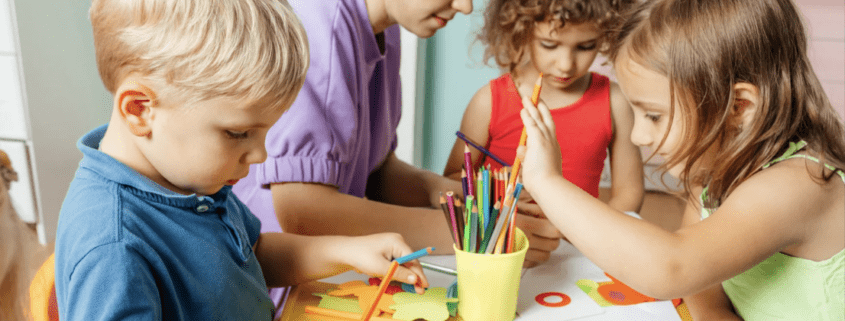Early school experiences lay the foundation for a child’s academic future. It’s important to make these experiences positive for all children and demonstrate the value of learning together. Early childhood inclusion accomplishes both goals.
What Is Early Childhood Inclusion?
Early childhood inclusion acknowledges the rights of all babies and young children to learn, grow, and play alongside their communities. Committing to early childhood inclusion means welcoming children with and without disabilities, of all backgrounds, and races into a shared, nurturing environment.
To include children of all positions, schools and care centers must ensure everyone can participate fully. Children deserve the accommodations and support they need to have an experience as enriching as their peers.
Benefits of Early Childhood Inclusion
Early childhood inclusion benefits child development on every level.
Increased Academic Potential
When inclusive environments incorporate best practices for teaching, children develop the most robust foundation for early learning. For example, research shows that children in high-quality inclusive preschool programs progress significantly in language and literacy, whether they have a disability or not.
Another study shows that inclusion settings lead to better cognitive outcomes for children with autism. Those with higher support needs have the most significant gains, but well-supported integrated learning assists all children.
Everyone benefits when classrooms embrace the power of individualized learning. Staff members in mixed-ability settings pay attention to what each child needs and direct learning accordingly. This personalization helps all children reach their academic potential.
Increased Social Bonding
Children with strong social skills in kindergarten are more likely to succeed in school, go on to college, and successfully navigate the job market. Inclusive early education settings help children develop these skills by teaching them how to interact with others.
Compared to children in non-inclusive programs, children in inclusive education settings interact more with peers. Teachers support healthy student interactions, but much of the learning happens through direct experience.
For example, in one observational study, a teacher saw children behave more gently and show more helpful behaviors when working with a peer with disabilities. These relationships build into the understanding, tolerance, and acceptance that often develop in inclusive classrooms.
Increased Communication Skills
Young children’s communication and conflict-resolution skills are the foundations of lifelong social patterns. The integration classroom encourages children to practice and refine these skills through structured and unstructured activities.
In inclusive classrooms, teachers often teach communication skills as part of the typical school day. For example, the teacher may model how to ask for a toy or communicate a problem while children share a play space. These practical lessons help all children involved.
Also, in an inclusive environment, children practice communicating with a diverse group of peers and teachers. Teachers model what it means to convey a message and check for understanding. They typically teach developing children how to interact with peers of all abilities/backgrounds, and in doing so, they show children how to communicate effectively.
Increased Play Opportunities
Inclusion settings allow every child to learn and practice social skills. One 2010 study tested this kind of intervention. Afterward, there were more invitations to play and more “yes” answers.
Other research has confirmed that inclusion and cooperative learning settings help children feel more accepting toward peers with disabilities. By establishing these attitudes of acceptance in the preschool years and earlier, parents and educators can help children make more friends and play with peers of all ability levels.
Cadence Education’s Dedication to Inclusion
Cadence Education has embraced the power of inclusion since day one. Cadence Education believes in every child’s unique potential and welcomes everyone as they are.
Cadence Education schools provide all students with the support they need to thrive. Each Cadence student enjoys the help of teachers and peers as they navigate their unique journeys.
Methods of Early Childhood Inclusion
Cadence Education’s commitment to inclusion shows in every interaction and program.
- Individualized care: Cadence educators get to know each child, learning what each one needs to thrive and learn.
- Play-based learning: Knowing that children learn best through play, Cadence provides opportunities for children of all abilities to play together.
- Home-school communications: Cadence builds strong partnerships with families so children feel understood and seen in both environments.
- Diversity education: Cadence teaches children that our differences make us stronger. Students learn the importance of kindness and respect for individuals of all ages, abilities, and backgrounds.
- Respect-based culture: Cadence’s teaching and employment policies emphasize treating everyone fairly and respectfully.
You’ll see respect and kindness in action every day at all Cadence schools.
Top Education with Cadence Education
Cadence Education provides the kind of nurturing environment that helps children grow into caring, welcoming, and inclusive individuals.
Let us help you find the right school and program for your child. Try our search tool today or contact us directly to discuss your family’s needs.

